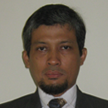
Sukoco
Work place: Department of Computer Science and Electronics, Faculty of Mathematics and Natural Sciences Universitas Gadjah Mada, Yogyakarta, 55281, Indonesia
E-mail: pak_koco@yahoo.com
Website:
Research Interests: Computer systems and computational processes, Computational Game Theory, Computer Graphics and Visualization, Computer Animation
Biography
Sukoco. Currently is pursuing his Doctoral Program in Department of Computer Science and Electronics FMIPA, Universitas Gadjah Mada, Yogyakarta, Indonesia.
He is a lecturer at Informatics Departement of Universitas Surakarta, Indonesia. He had his undergraduate degree (SSi) in Electronics and Instrumentation, FMIPA, Universitas Gadjah Mada, Yogyakarta, Indonesia in 1992, and Master (MKom) in Informatics from Universitas Dian Nuswantoro, Semarang, Indonesia in 2010; also he had his Master (MSi) in Environment Science from Universitas Sebelas Maret, Surakarta, Indonesia in 2009.
Mr. Sukoco’s research areas of interest are game, animation and simulation.
Author Articles
Multi-Character Fighting Simulation
By Sukoco Retantyo Wardoyo Agus Harjoko Mochamad Hariadi
DOI: https://doi.org/10.5815/ijisa.2018.08.01, Pub. Date: 8 Aug. 2018
In the development of and research into multi-character fighting computer games, Non-Player Characters (NPCs) frequently seem less intelligent owing to them having a single focus. As such, multi-character fighting becomes one-on-one fighting; one character will encounter another character only once the previous opponent is defeated. This study develops a new model in multi-character fighting, in which each NPC can simultaneously fight against many characters. Following this model, each character becomes an agent that makes his own decisions. The first advantage of this model is the integration of multi-character behaviors in fights. Each character can seek out enemies/opponents, select one target opponent, avoid obstacles, approach the target opponent, change the target opponent, and then defeat the opponent or be defeated by the opponent; in other words, each character can thus fight against many opponents. All of the behaviors in the fight take place automatically. The second advantage of this model is that each character does not only focus on the opponent being targeted, but also on the other opponents surrounding him. Each character can move from one opponent to another, even when the target opponent is not yet defeated. The third advantage of this model is that each character can move to another fight cluster, thus ensuring that fights seem more dynamic. This research has experimented with the model using a 3D application that can run on personal computers or smart phones.
[...] Read more.Other Articles
Subscribe to receive issue release notifications and newsletters from MECS Press journals